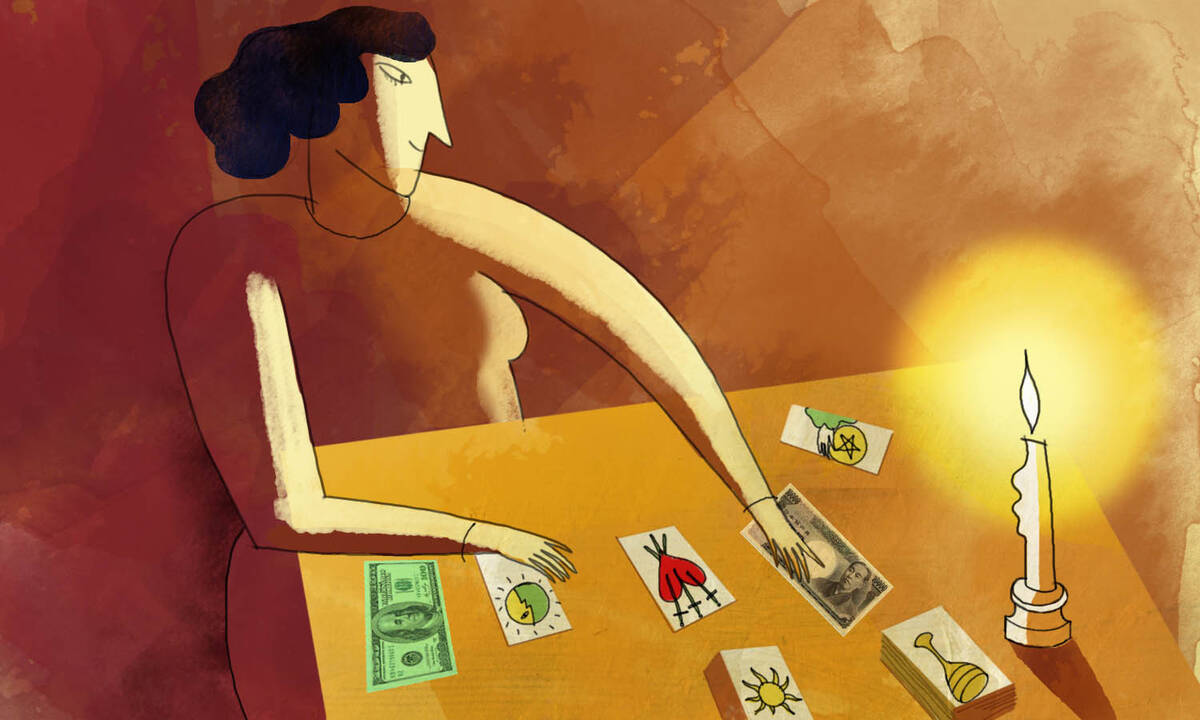While $100 may buy you, say, a 10,000-yen stake in a Japanese company, the value of your investment in U.S. dollars will fluctuate according to the exchange rate between the yen and the dollar, which is constantly changing. So, if exchange-rate fluctuations could be predicted, investors could improve the timing of their foreign investments and earn higher returns.
Despite decades of research, economists have yet to identify a reliable way to forecast exchange rates. The best method, called a “random walk,” involves using today’s exchange rate to forecast future exchange rates. “It is the best method, but it is lousy,” says Sergio Rebelo, a professor of finance at Kellogg.
Now, Rebelo and his colleagues Martin Eichenbaum of Northwestern University and Benjamin K. Johannsen of the Federal Reserve have come up with something better. They found that the nominal exchange rate between two currencies—for example, the number of Japanese yen equivalent to one U.S. dollar—varies predictably according to a standard economic indicator called the “real exchange rate.” This indicator compares the price of goods in two different countries. For example, if one dollar equals 100 yen, and an orange costs $1 in the U.S. and 100 yen in Japan, the “real exchange rate” between the two countries is 1, because the price of an orange in dollars is the same in the two countries.
Rebelo and his colleagues found that movements in the real exchange rate lead to predictable changes in the nominal exchange rate. The catch? This prediction method doesn’t work in the short term. “You can only forecast the nominal exchange rate three to ten years out, not sooner.” Rebelo says.
While this medium- to long-term predictability won’t change the way short-term-currency speculators do business, it can have big effects on the timing of foreign direct investments. “When you invest in another country, you’re going to be there for 20 or 30 years, if not longer,” Rebelo says. “Our method beats the random walk by a wide margin at medium and long horizons—and these are the horizons that are important for businesses.”
What Determines the Real Exchange Rate?
The real exchange rate can be computed with some back-of-a-napkin math: if you take the ratio of prices of the same good in two countries and multiply by the nominal exchange rate, you get the real exchange rate.
The idea that the real exchange rate predicts future currency fluctuations is not new. Two decades ago, researchers noticed a predictive relationship, but subsequent research found it to be mysteriously unreliable. In some countries, the real exchange rate could predict the nominal exchange rate three to ten years out, but in other countries, the two values showed no relation at all. “So, researchers concluded that the results were not robust and abandoned the idea,” Rebelo says.
Today, with a few more decades of data to draw from, the authors hoped to get a deeper understanding of the predictive power of the real exchange rate.
Getting the data on nominal exchange rates and prices was straightforward—Rebelo and his collaborators obtained their data from the International Monetary Fund’s International Financial Statistics database, collecting nominal exchange rates and prices from 23 countries between 1973 and 2008.
Monetary Policy and Exchange-Rate Predictability
Thanks to their wealth of historical data, Rebelo and his collaborators discovered two reasons for the lack of robustness in predictive ability.
First, they found, the real exchange rate only predicts the nominal rate in currencies of countries with floating exchange rates, meaning the price of the country’s currency in dollars (for example, one dollar to 100 yen) is allowed to fluctuate (or “float”) according to supply and demand. Under this type of regime, when Americans demand more yen, for example, the yen will cost more in dollars and the Japanese government won’t intervene to prevent this appreciation from occurring.
Second, the central banks of the two countries must follow an inflation-targeting policy. That is, the country must be willing to adjust interest rates to keep the inflation rate around a target value, like two percent per year.
The real exchange rate is what economists call a “stationary series.” “When it’s high, it tends to come down, and when it’s low, it tends to go up,” Rebelo explains. However, these corrections generally take three to ten years to occur, which is why the real exchange rate is not useful for predicting the nominal exchange rate in the short term. “But it works beautifully for long-run forecasts,” Rebelo says.
This stationary nature of the real exchange rate is also key to its predictive power. In countries with inflation-targeting policies, the way that the real exchange rate reverts towards the mean is through changes in the nominal exchange rate. (For instance, if goods cost significantly more in Japan than in the U.S., the yen–dollar nominal exchange rate will gradually adjust until the real exchange rate hits its “normal” level.) As a result, the current real exchange rate predicts the future nominal exchange rate.
Most advanced economies began shifting to floating exchange rates after the U.S. detached the dollar’s value from gold in 1973. In recent decades, inflation targeting has become quite common as well: Canada, Germany, and the UK adopted it in the 1990s; the United States only officially began targeting inflation in 2012 but has done so unofficially since 1986.
This decades-long trend in nations’ monetary policy gave Rebelo and his coauthors “before and after” scenarios to further test whether real exchange rates could predict nominal exchange rates.
For example, in 1999 Brazil adopted both an inflation-targeting monetary policy and a floating exchange rate for its currency. Rebelo’s data show that between 1982 and 1999, there is no correlation between Brazil’s current real exchange rate and future values of the nominal exchange rate.
But after 1999, a pattern emerged: high or low values of the real exchange rate for Brazil were followed by corrections in the value of Brazil’s currency. In 2011, the real exchange rate between Brazil and the U.S. was the highest in 30 years, but by 2016 it had corrected back downwards to average levels. And sure enough, the nominal exchange rate depreciated by roughly 60 percent between 2011 and 2016.
Why Investors Should Pay Attention to Real Exchange Rates
Rebelo says his findings are of interest to any company making foreign investments, because “the number-one driver of success or failure of these investments is timing, as far as the exchange rate is concerned.”
“Investments in foreign currency—whether in land, equipment, or shares—made at high real exchange rates are likely to see their dollar value decline over time because of the depreciation of the foreign currency,” he explains. By the same logic, making a foreign investment when the real exchange rate is unusually low “puts the wind at your back, because the dollar value of the assets will tend to improve over time.”
However, Rebelo reminds investors that this rule of thumb only applies to countries with floating exchange rates and an inflation-targeting monetary policy. While that covers most developed countries, it excludes countries like China, which do not have floating exchange rates.
Rebelo believes that examining real exchange rates should become standard in evaluating foreign investments. “Companies spend a lot of time looking at many aspects of foreign deals—but often they don’t look at the real exchange rate,” he says. This omission is unwise, he warns, since “the real exchange rate is an important predictor of how much value the deal will create.”




